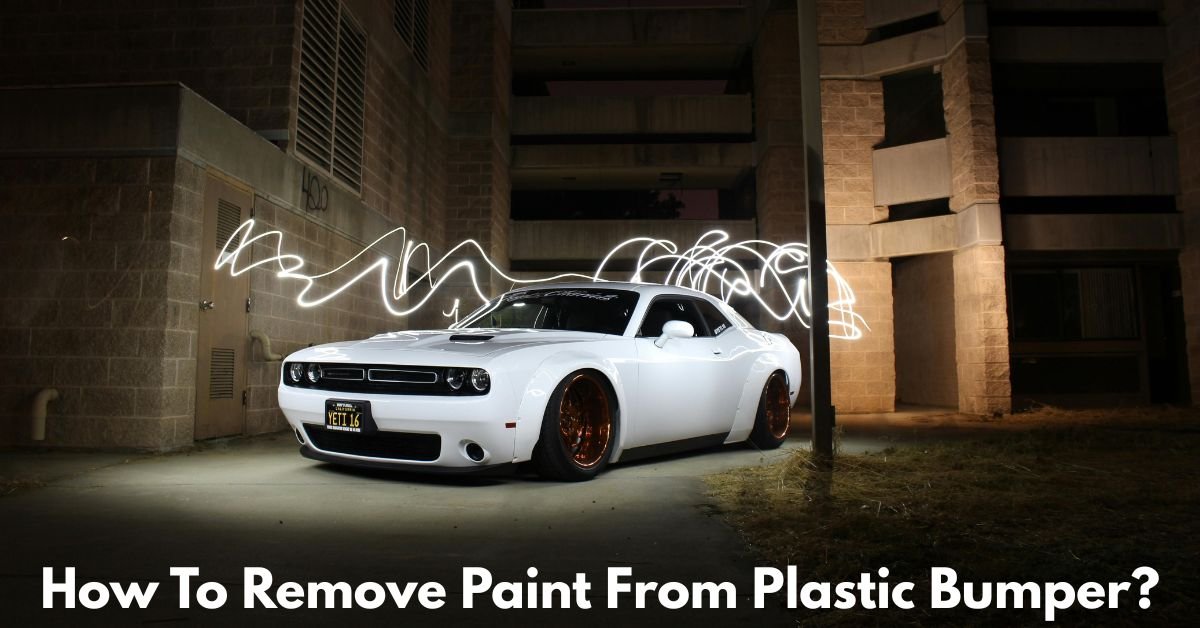Whether it’s from a minor accident, an errant brush stroke during a DIY project, or overspray from a nearby paint job, getting unwanted paint on your car’s plastic bumper can be frustrating. Fortunately, removing paint from a plastic bumper is possible without causing damage—if you know what you’re doing. In this guide, we’ll walk you through several effective methods, tools, and tips to safely remove paint and restore your bumper’s appearance.
How to Remove Paint from a Plastic Bumper: A Step-by-Step Guide
Understand the Type of Paint and Surface
Before you begin, it’s important to identify what kind of paint you’re dealing with—spray paint, house paint, or automotive paint—because the method you choose will depend on this. Equally important is confirming that your bumper is plastic (which is common on most modern vehicles) and coated with a factory finish or clear coat, as this affects how aggressively you can treat the surface.
Tools and Materials You May Need
Depending on the method you choose, gather some or all of the following materials:
- Microfiber cloths
- Bucket of warm water and mild soap
- Isopropyl alcohol (70% or higher)
- Goo Gone or WD-40
- Clay bar kit
- Automotive-grade rubbing compound
- Plastic-safe paint remover or acetone (use with caution)
- Soft sponge or plastic scraper
- Gloves and eye protection
Method 1: Soap and Water (For Fresh or Light Paint Marks)
If the paint is still fresh or hasn’t bonded too strongly with the surface, try this simple method:
- Add a few drops of dish soap to some warm water.
- Soak a microfiber cloth in the solution and gently rub the paint mark.
- Rinse and repeat until the paint fades or is removed completely.
This is the safest option and should be your first approach.
Method 2: Rubbing Alcohol or Isopropyl Alcohol
Isopropyl alcohol can remove paint without harming most plastic bumpers if used carefully.
- Dampen a clean cloth with isopropyl alcohol.
- Use gentle circular strokes to rub over the paint mark.
- Wipe off with a clean damp cloth to remove residue.
Be careful not to over-saturate or scrub aggressively, as it may dull the finish.
Must Read: What Is The Green Car Symbol On Dashboard Chevy?

Method 3: Clay Bar Treatment
A clay bar can be surprisingly effective for removing surface contaminants like paint overspray.
- Wash the bumper to remove dirt.
- Apply clay lubricant (or a mix of water and car soap).
- Gently rub the clay bar over the painted area.
- Wipe clean and inspect.
This method is popular with detailers and works well for small paint particles embedded in the clear coat.
Method 4: Goo Gone or WD-40
Both Goo Gone and WD-40 are safe for most plastics and can dissolve paint residue effectively.
- Spray the product on the affected area.
- Let it sit for a minute or two.
- Gently rub with a microfiber cloth or sponge.
- To get rid of any greasy residue, wash with soap and water.
Avoid letting these products sit too long, especially in hot weather, as they can soften the bumper surface.
Method 5: Acetone or Plastic-Safe Paint Remover
This is the most aggressive method and should only be used when others fail.
- Put a tiny bit of acetone on a cotton swab or cloth.
- Test on an inconspicuous area first to check for damage.
- Lightly dab the paint—do not scrub.
- Wipe off quickly with a damp cloth.
Acetone can strip the clear coat or discolor plastic if left on too long, so use extreme caution.
Aftercare: Restoring the Shine
Once you’ve removed the paint, the bumper may look dull or scratched. Here’s how to restore it:
- Use a plastic-safe rubbing compound to polish the area.
- Follow with a quality car wax or sealant to protect the surface.
- Buff with a microfiber towel to restore shine.
If the bumper still looks damaged, consider using a plastic restorer or touch-up paint.
Final Tips and Warnings
- Any chemical should always be tested first on a small, unseen area of the bumper.
- Avoid using metal scrapers or harsh abrasives—they’ll scratch the plastic.
- Seek advice from a qualified detailer if you’re not sure or if the paint is thick.
Conclusion
Removing paint from a plastic bumper might seem daunting, but with the right tools and methods, it’s definitely a DIY-friendly task. Start with the gentlest techniques and gradually increase intensity only if needed. With a bit of patience and the proper approach, your bumper can look as good as new—no expensive body shop visit required.
